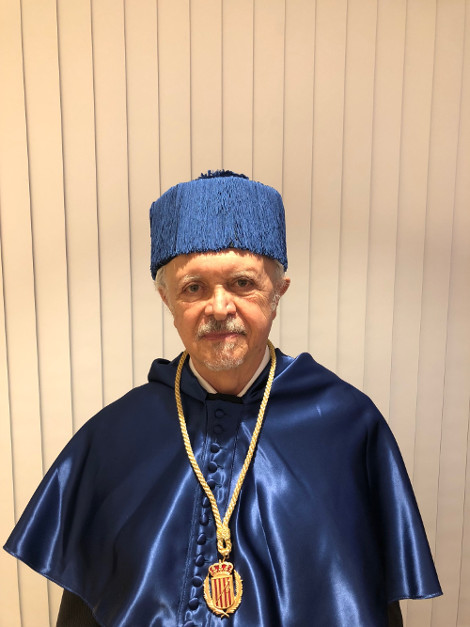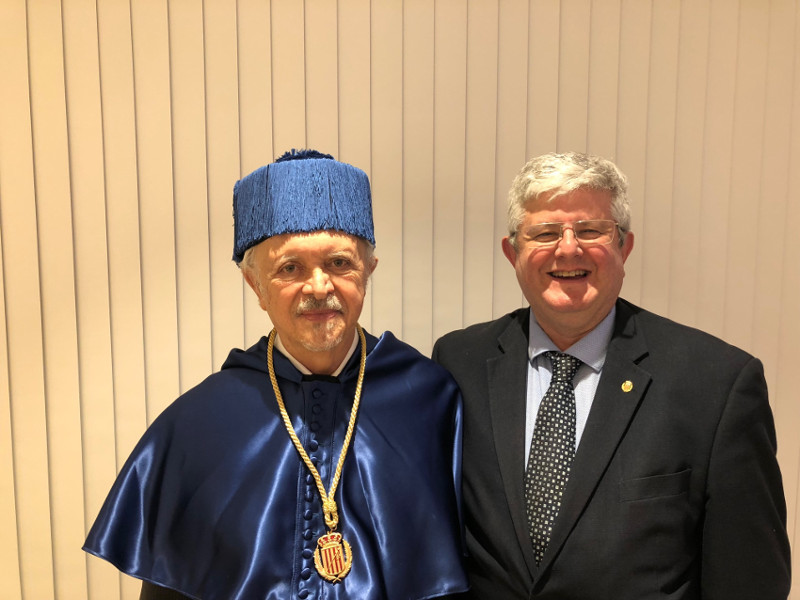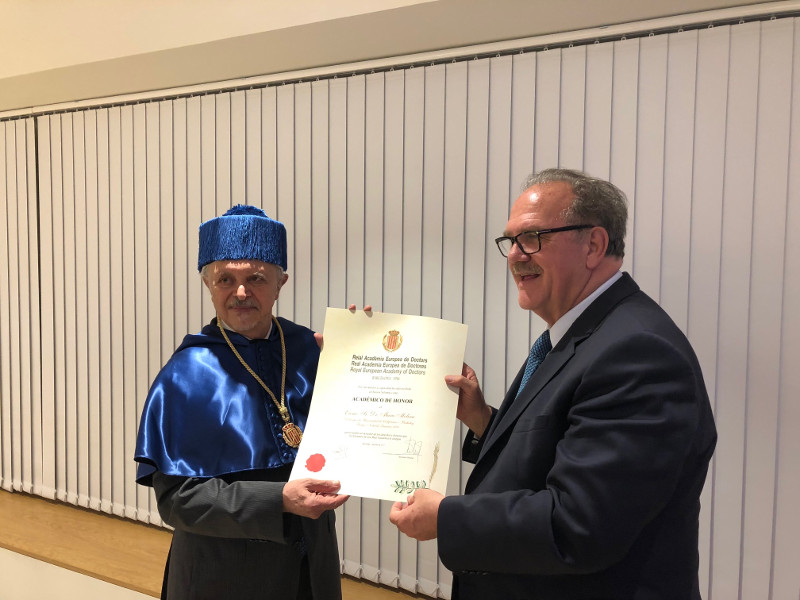Mario Molina, Nobel and honorary academician of the RAED, certifies the success of the Montreal Protocol that he promoted with his discoveries

Dr. Mario Molina
Mario Molina, Nobel prize in Chemistry and honorary academician of the Royal European Academy of Doctors-Barcelona 1914 (RAED), presented his research on climate change in an academic ceremony that the Royal Academy held on June 8 in Madrid, taking up the session that Molina couldn’t star a year ago to be hospitalized. The event took the format of a dinner-colloquium and also included the participation of Alfredo Rocafort, full academician and president of the Governing Board of the RAED; José Luis Salido, full academician and general secretary; José Ramón Calvo, full academician and president of the Institute of Interdisciplinary Research of the RAED, and also the full academicians Francisco López Muñoz and Joan Francesc Corona.
Molina certified that since the implementation of the measures included in the Montreal Protocol, the atmospheric concentrations of the most important chlorofluorocarbons (CFCs) and chlorinated hydrocarbons have stabilized or have been reduced. The concentration of halons has continued to increase due to halon gases that are stored in fire extinguishers and are still in use. However, the trend has clearly decreased and its presence is expected to decline by 2020. The concentration of hydrochlorofluorocarbons (HCFCs) has increased significantly, largely due to the multiple uses in which they replace CFCs, such as solvents or refrigerants.
The degree of compliance with the Protocol has been enormous. That is why it’s considered the most successful international environmental agreement in the world to date and an exceptional example of international cooperation, with the objective of recovering the ozone layer and therefore improving a substantial part of the accumulation of gases of greenhouse effect, fundamental cause of climate change due to anthropogenic causes. Molina, precisely, won the Nobel for the verification of the role played by CFCs in the destruction of the ozone layer.
The academician has researched the chemistry of atmospheric pollution in the lower atmosphere and works with international multidisciplinary teams to address the problem of the degradation of air quality in the major cities of the planet, especially focused on air pollutant groups in urban areas. His interest in the climate and the consequences derived from the anthropogenic factor began in 1972, when he began working with his mentor, Sherwood Rowland. Together they addressed research on the chemical properties of the atom in radioactive processes. One of the lines of research in which they worked was to find out the fate of some inert chemical particles derived from industrial processes accumulated in the atmosphere and whose effects on the environment had not been taken into account until that moment.
After months of research they developed the theory of the reduction of the ozone layer, which revolutionized what until now was known about that topic when realizing that the atoms produced by the decomposition of CFCs destroyed the atmospheric ozone layer and that it had very serious consequences ranging from alterations in health, increased presence of skin cancer in the affected areas, to changes in the earth’s climate pattern. In 1974 they published the results in the journal Nature.








